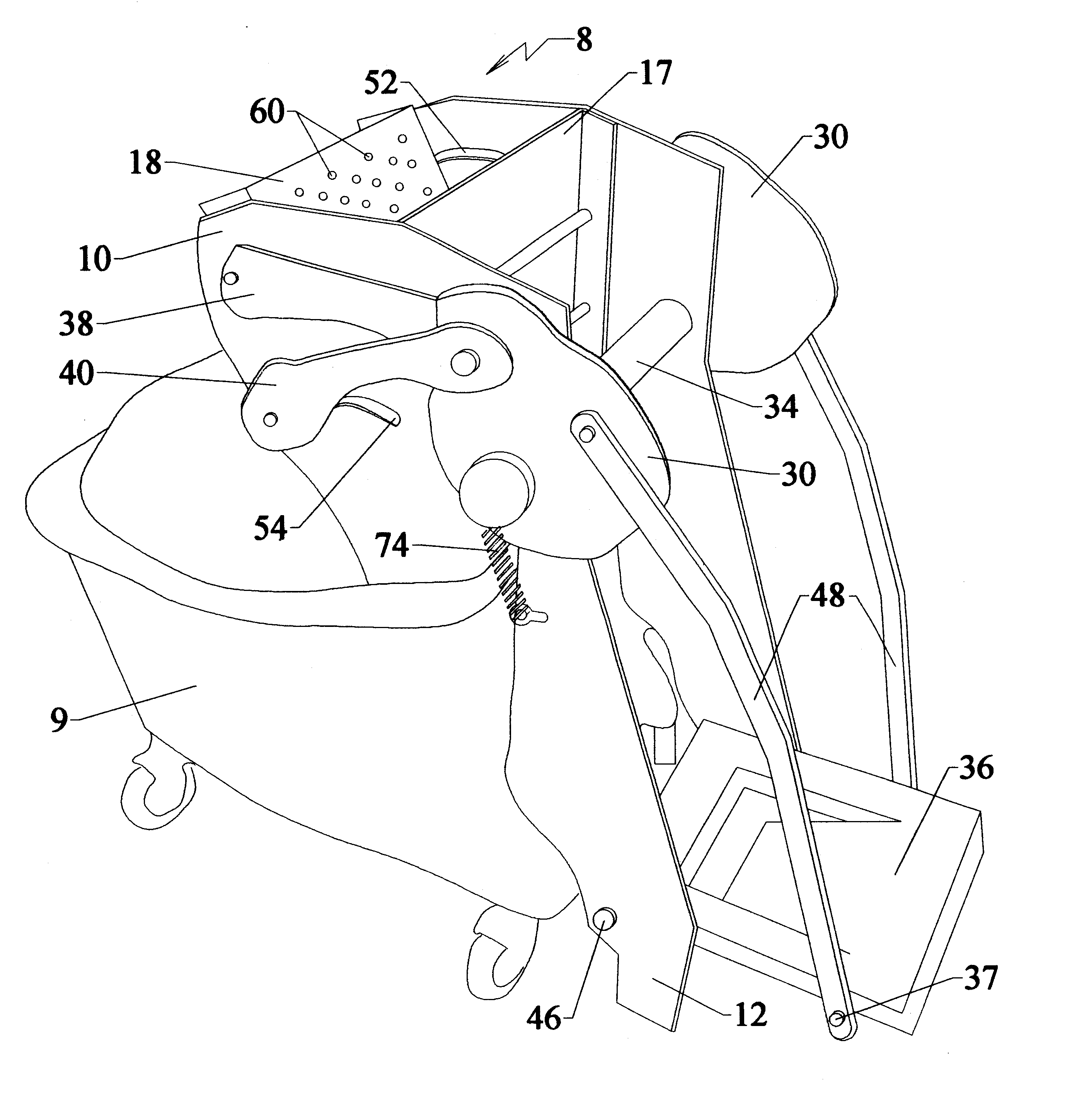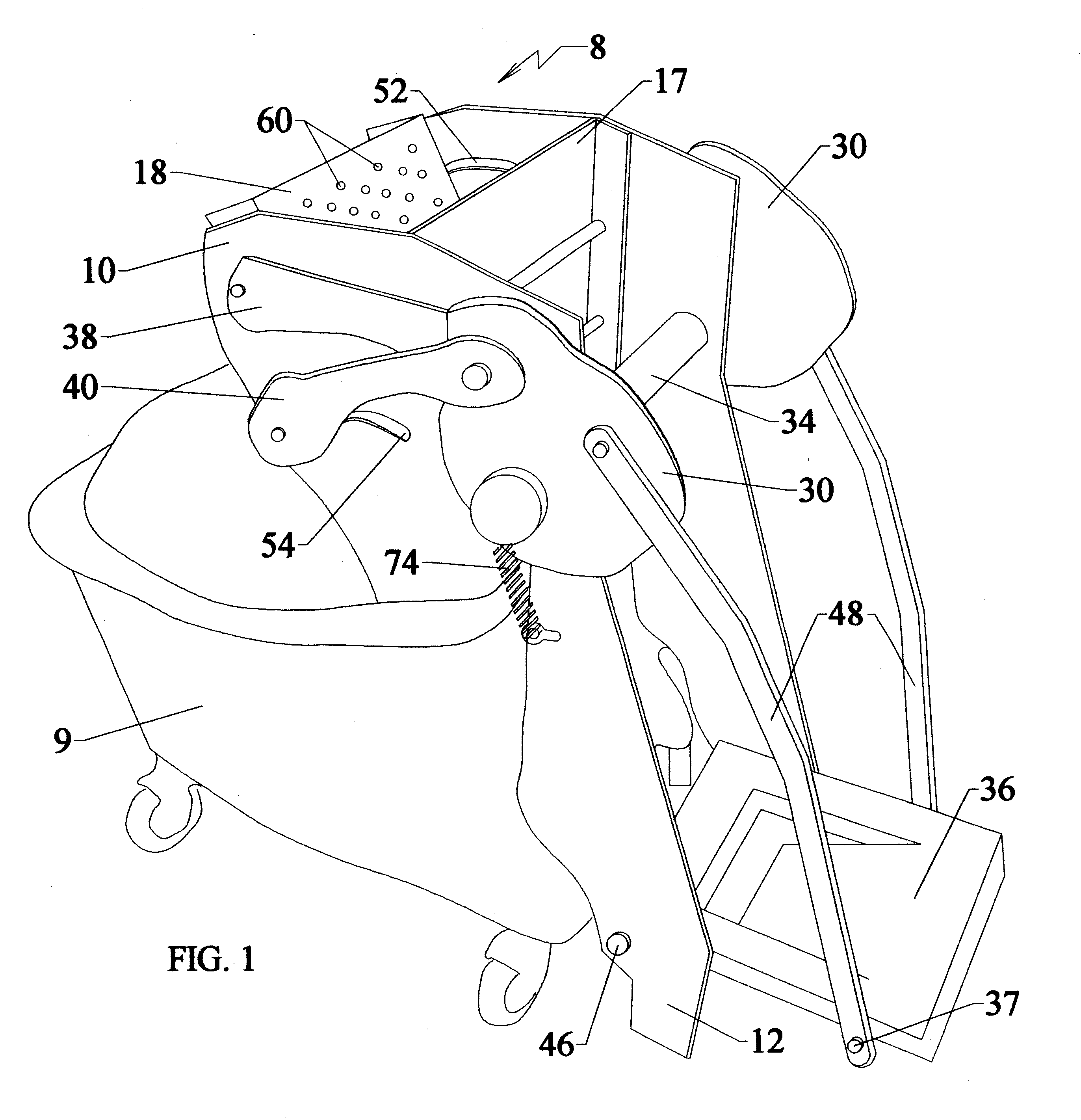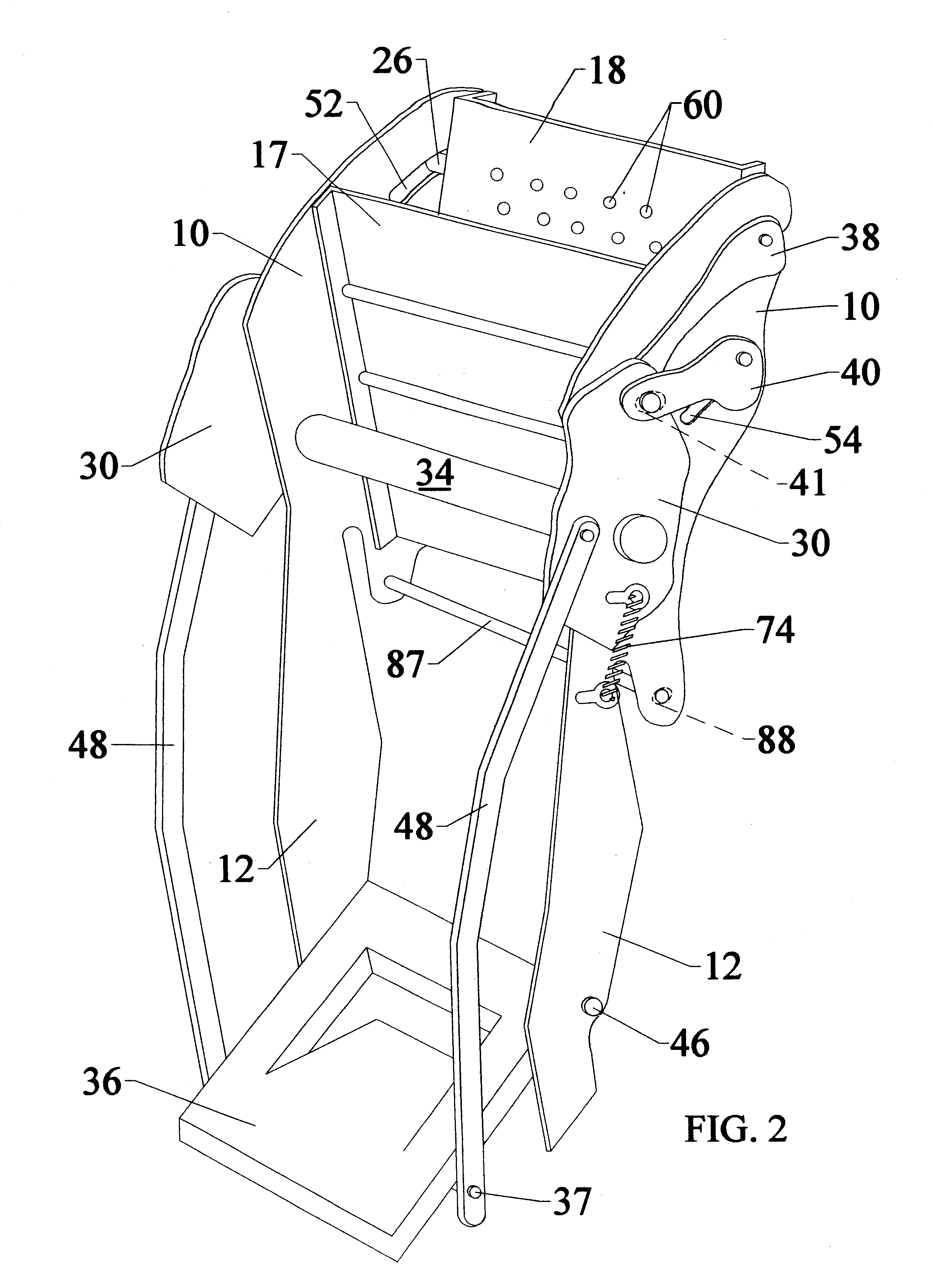Mop wringer
a wringer and mops technology, applied in the field of wringers, can solve the problems of requiring unnatural posture, placing unnecessary stress and strain on hands, wrists, backs, etc., and achieves the effects of reducing force and posture factors, facilitating wringing wet mops, and improving productivity
- Summary
- Abstract
- Description
- Claims
- Application Information
AI Technical Summary
Benefits of technology
Problems solved by technology
Method used
Image
Examples
Embodiment Construction
The mop wringer, indicated generally by the numeral 8, is positioned on the rim of a mop bucket 9 or other suitable receptacle, as shown in FIG. 1. The wringer includes a pair of spaced frame members or lateral plates 10, each having a downwardly depending extension or leg 12, thereby defining a groove 13 to allow the wringer to rest on the rim of the bucket 9. The bottom marginal edge of each extension 12 terminates above the floor, thereby providing stability by pressing against the floor as the foot pedal is depressed during the wringing step.
The lateral plates 10 are provide with aligned openings 45 that accommodate and hold the lower-most axle 46 which spans the leg extensions 12 of the spaced lateral plates 10. Similarly, the upper axle 34 is passed through and held by aligned openings 33, and axle 34 spans the spaced lateral plates 10. Disk links 30 are mounted on the opposed ends of the upper axle 34 and to the outside of the lateral plates. It is understood by one skilled i...
PUM
 Login to View More
Login to View More Abstract
Description
Claims
Application Information
 Login to View More
Login to View More - R&D
- Intellectual Property
- Life Sciences
- Materials
- Tech Scout
- Unparalleled Data Quality
- Higher Quality Content
- 60% Fewer Hallucinations
Browse by: Latest US Patents, China's latest patents, Technical Efficacy Thesaurus, Application Domain, Technology Topic, Popular Technical Reports.
© 2025 PatSnap. All rights reserved.Legal|Privacy policy|Modern Slavery Act Transparency Statement|Sitemap|About US| Contact US: help@patsnap.com



